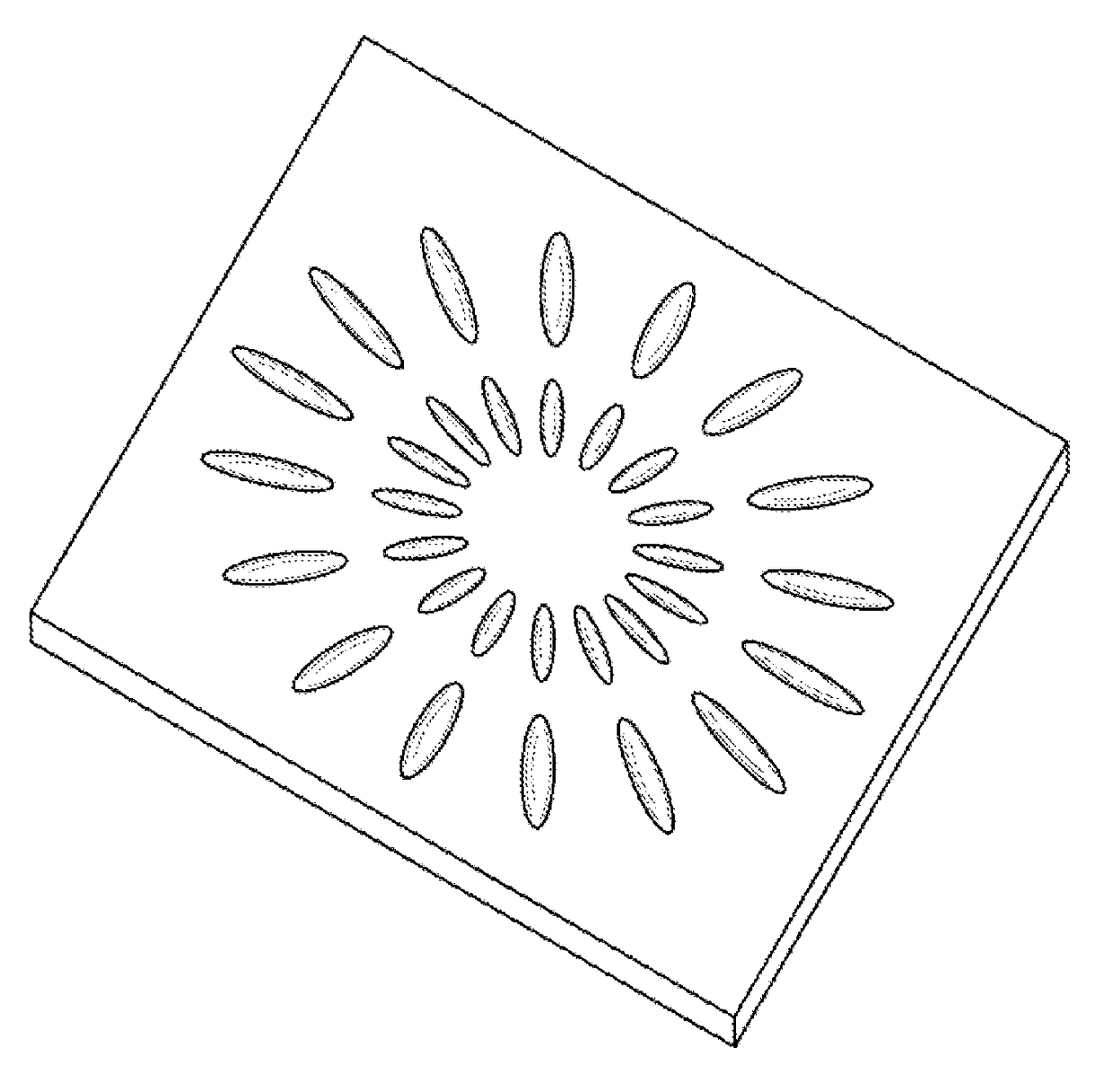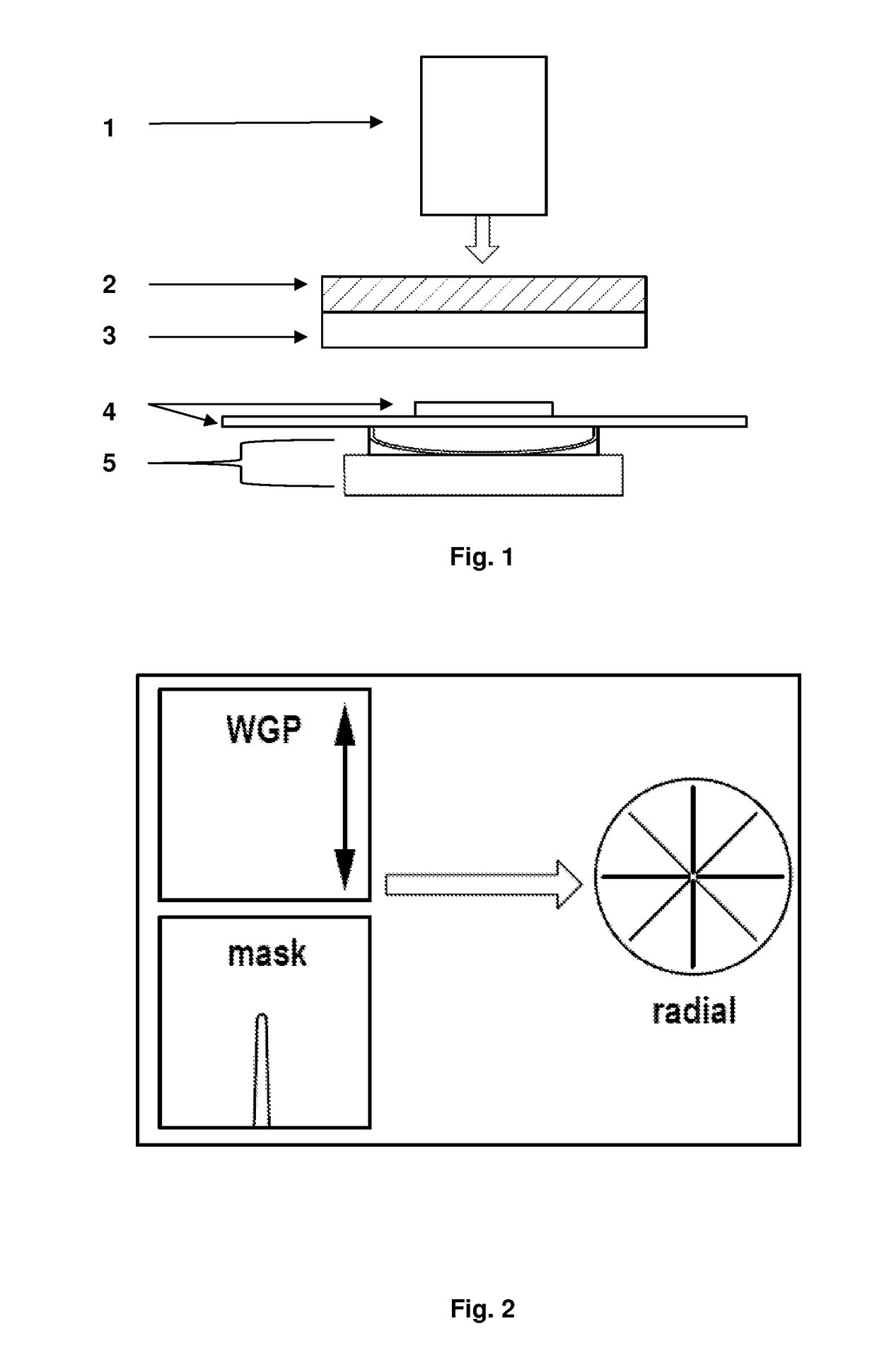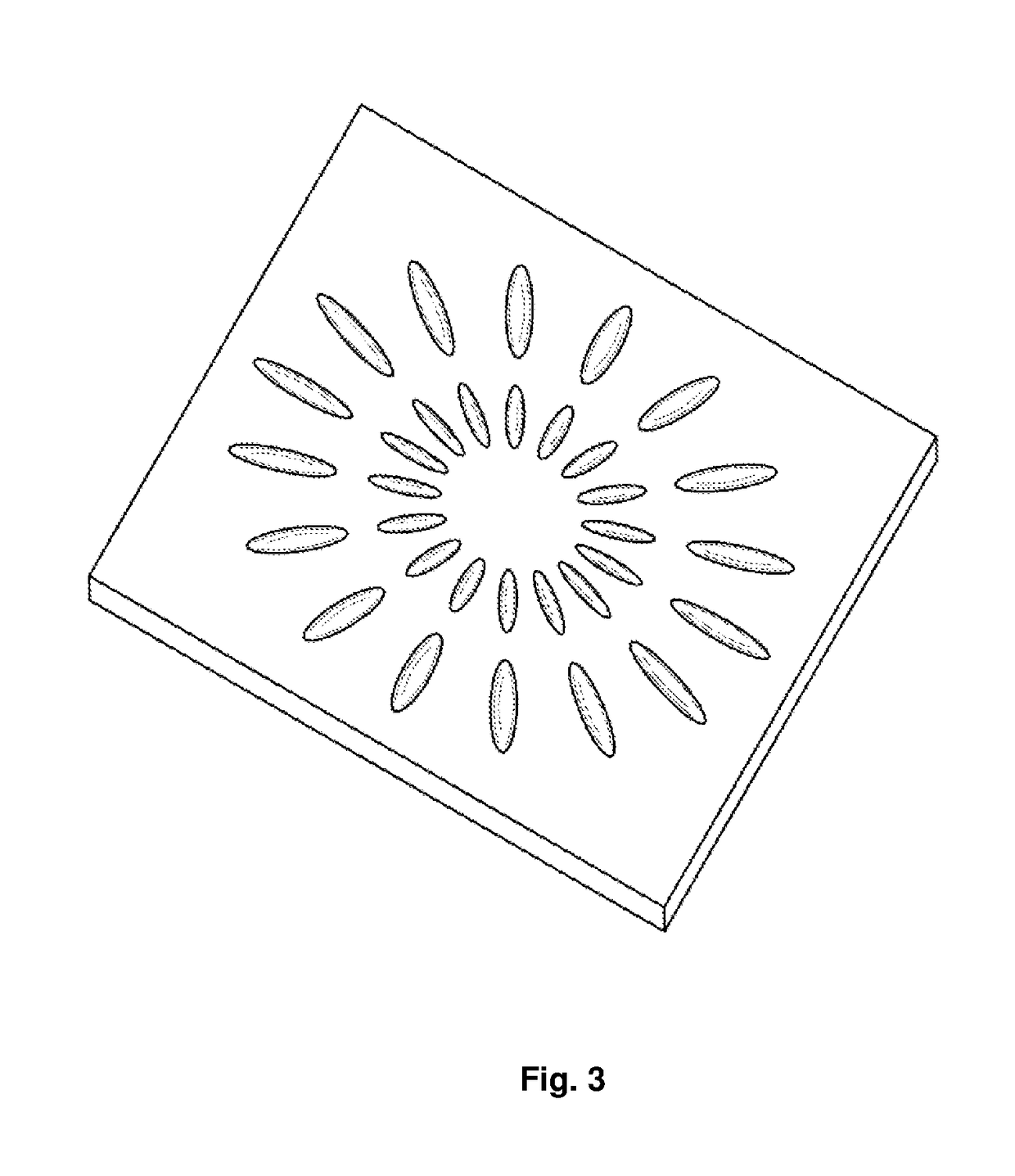Method of preparing a birefringent polymer film
a polymer film and birefringent technology, applied in the field of preparing a polymer film the, can solve the problems of difficult optimization of the rubbing process, difficult control in high-class clean rooms, and unfavorable rubbing process, so as to reduce the cure time
- Summary
- Abstract
- Description
- Claims
- Application Information
AI Technical Summary
Benefits of technology
Problems solved by technology
Method used
Image
Examples
examples
[0299]1. Mixture Examples
[0300]1.1 Mixture M1
[0301]The following polymerizable liquid-crystalline material is prepared
[0302]
AmountCompound[% w / w]62.8211.008.008.008.002.00TegoRad 25000.10Irganox 1076 ® (stabilizer)0.08Clearing point: 40.0° C.
[0303]1.2. Mixture M2
[0304]The following polymerizable liquid-crystalline material is prepared
[0305]
AmountCompound[% w / w]62.8211.008.008.008.002.00TegoRad 25000.10Irganox 1076 ® (stabilizer)0.08Clearing Point 48.7° C.
[0306]1.3. Mixture M3
[0307]The following polymerizable liquid-crystalline material is prepared
[0308]
AmountCompound[% w / w]10.0054.319.518.008.008.002.00TegoRad 25000.10Irganox 1076 ® (stabilizer)0.08Clearing Point: 43.5° C.
[0309]2. Cell Production
[0310]5 μm spacer beads are mixed with Norland81 UV glue. The cell is created by placing drops of glue / beads mixture onto corners of raw glass slide, providing a second raw glass slide down on top, and then curing for 60 seconds with UV light (25 mW).
[0311]3. Radial Alignment
[0312]Mixture M3...
PUM
| Property | Measurement | Unit |
|---|---|---|
| angle | aaaaa | aaaaa |
| angle | aaaaa | aaaaa |
| temperature | aaaaa | aaaaa |
Abstract
Description
Claims
Application Information
 Login to View More
Login to View More - R&D
- Intellectual Property
- Life Sciences
- Materials
- Tech Scout
- Unparalleled Data Quality
- Higher Quality Content
- 60% Fewer Hallucinations
Browse by: Latest US Patents, China's latest patents, Technical Efficacy Thesaurus, Application Domain, Technology Topic, Popular Technical Reports.
© 2025 PatSnap. All rights reserved.Legal|Privacy policy|Modern Slavery Act Transparency Statement|Sitemap|About US| Contact US: help@patsnap.com



